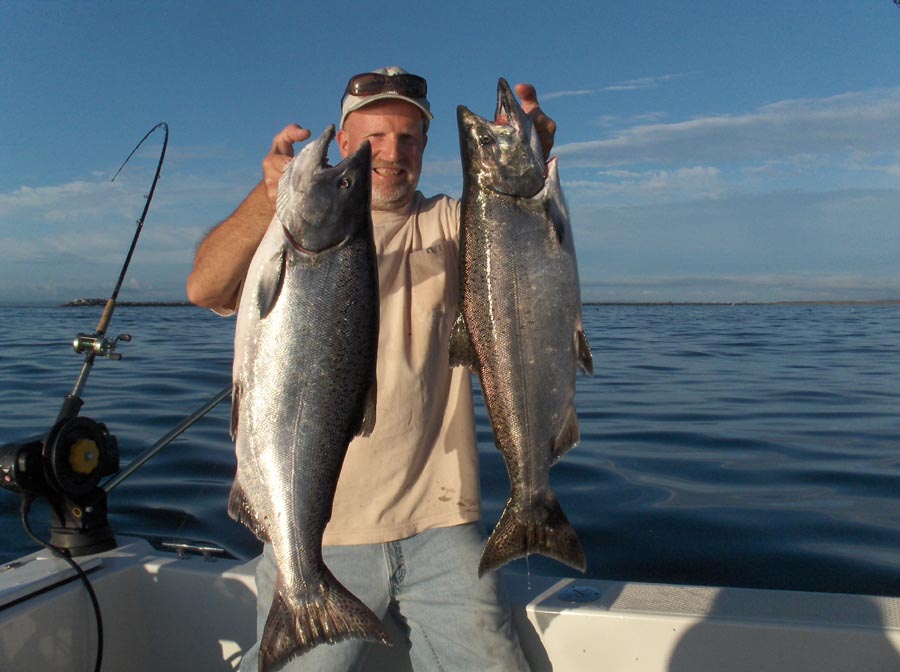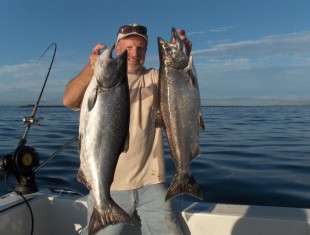
Unfortunately, the West Coast sardine population has apparently collapsed again. The 2013 fall stock assessment off California showed a 75 percent drop since the last population peak during 2006.
This is not good news for sea birds, marine mammals or any fish that partly relies on these fat, once abundant tasty morsels. But it’s not the first time this has happened and it won’t be the last. The boom and bust cycle of sardines worldwide is legionary, but it really messes with other species that feed on them, sometimes drastically. Even without commercial fishing it may take many years for sardine stocks to recover.
In 1935, the West Coast harvest of pilchards (Pacific Sardines) was about 1.5 billion pounds, not counting British Columbia’s massive commercial harvest. This was the greatest weight taken of a single species among all commercial fishes in North America at the time. Back then, purse seiners in British Columbia with 1,400-foot long nets would catch hundreds of tons of sardines in one set.
By the 1950s, no Pacific Sardine could be found off British Columbia, Washington or Oregon, and weren’t seen again in these waters until 1992.
What was the reason for this near total collapse of Pacific Sardines? Most marine scientists agree that their demise was a combination of over-fishing and unfavorable environmental ocean conditions.
Mysteriously, the population of pilchards collapsed before, even without the help of man. By studying sediment core samples from the bottom of the ocean, the old fish scales tell us what kind of fish and how abundant they were through thousands of years of history.
Scientists discovered nine major collapses and recoveries during the last 1,700 years. It appears the sardine population took anywhere from 30 to 70 years to recover each time during this 1,700 year history. It also appears that when the anchovy population was up, the sardine population was down and visa versa, but not always.
Another mysterious thing about sardines is their genetic makeup does not vary much among individuals compared to other fish. While records of anchovies living here go back millions of years, we can’t find any records of sardines going back more then 10,000 years on the West Coast. This, along with the many up and down population cycles, might explain the low genetic diversity of the Pacific Sardine.
The spawning biomass of sardines on the West Coast during the 1930s was nearly four million tons. By the 1960s the population dropped to one hundred thousand tons and by the 1970s had dropped to less then five thousand tons.
In 1996, their numbers were about one million tons, then for some unknown reason sardine numbers exploded and soon huge commercial sardine boats were fishing all the way into British Columbia again.
There are about 18 species of sardines swimming the world’s oceans today. They are found in the waters of nearly every continent and are fundamentally a warm water species, but can tolerate colder water for a while.
Most of our sardines spend the winter from northern Mexico to southern California, and since 1992 they spend the summer from California to British Columbia.
Sardines can grow to 16 inches and can live to be 20 years old. But most are five to 10 inches and less then eight-years-old.
Like most baitfish, sardines are filter feeders. Studies from the 1930s showed their stomachs contained about 200 species of floating or suspended small plants and tiny animals. Small one-celled green plants called diatoms formed nearly 40 percent of the total food, and the remaining items were mostly tiny animal organisms.
The main spawning area for Pacific Sardines is off southern California and Baja California. The area is about 300 miles long and extends out 250 miles.
Pacific Sardines are batch spawners, with large fish releasing up to 65,000 eggs per spawning and up to 200,000 eggs per spawning season. The tiny eggs float near the surface and hatch in about three days. They absorb their yolk sac in about six days and begin to swim closer to shore, where they grow rapidly reaching four inches long their first year. By their second summer they start migrating north then head back south in the fall. The older they get the father north they go. The few that do stay up north have a low survival rate because of lack of food and cold water.
Studies during the 1930s off the British Columbia coast showed sardines made up 40 percent of the diet of Chinook and Coho salmon, and were an important food source for just about everything flying or swimming.
A big concern is what are these huge expensive sardine boats going to catch now that the sardines are disappearing. They might concentrate on anchovies and herring which could easily be over-fished in the ocean by these high-tech monsters. Last fall they were seen fishing inside Grays Harbor for anchovies with their huge nets.
State and Federal fisheries have a terrible track record when it comes to shutting down commercial fisheries until the fish are nearly wiped out!
Our salmon, halibut, ling cod and everything else out there greatly depend on these bait fish to survive.

